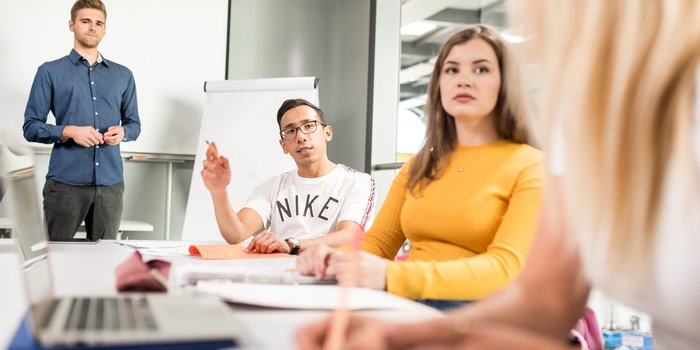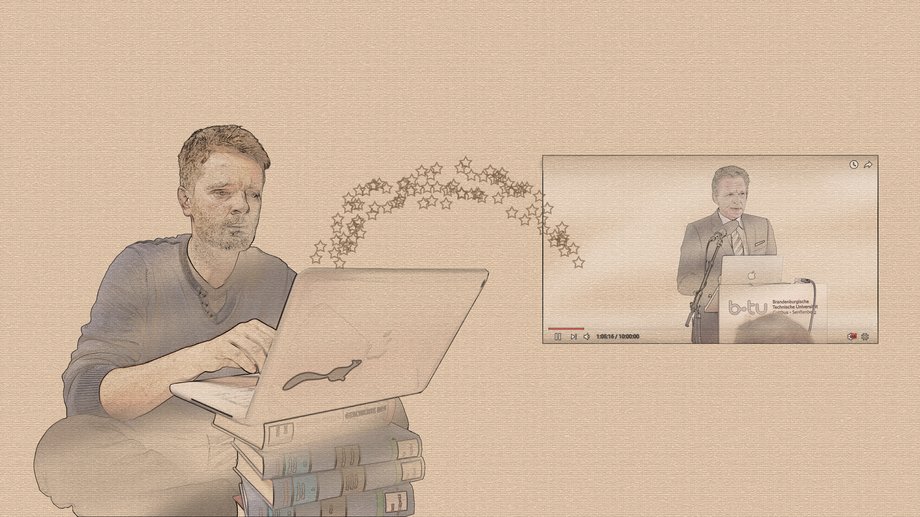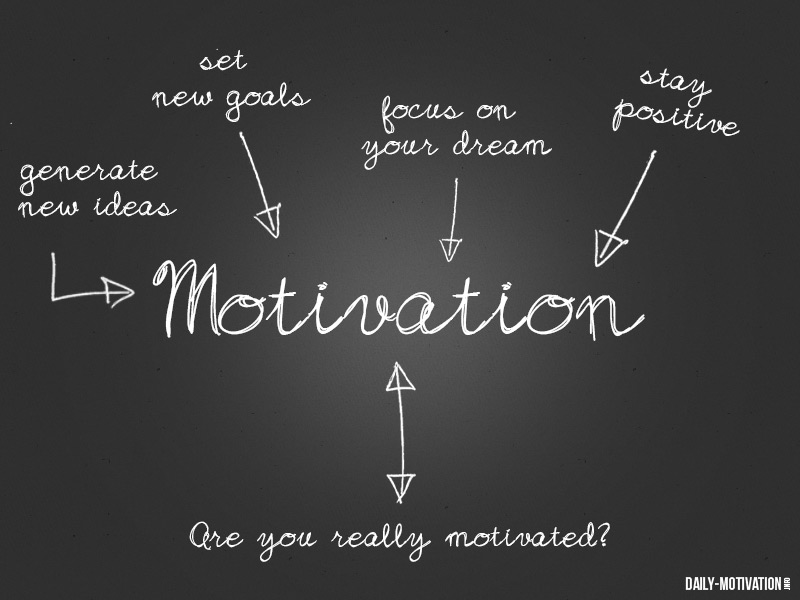Mediate

Teaching is an intentional process in which you present or depict teaching/learning content. This is possible in different media formats, such as text, audio, video, image, animation.

Context:
Students should learn to internalize content, recognize connections, understand concepts, argue and discuss. In doing so, it is important to make use of different senses and to allow for diversity of learning types - some prefer visual teaching/learning content, others auditory, and still others benefit from haptic learning opportunities.
Problem:
Students are inundated with information that is highly scientific and not infrequently difficult to understand as part of their studies. Different learning types are still often left out of the equation. In addition, due to private commitments, they sometimes have little time to intensively prepare and/or follow up on synchronous events. They want to receive and internalize content "on the side".
Solution:
Podcasts as audio contributions offer a good auditory learning format, which can also be received almost everywhere and "in between", e.g. while cycling or in the suburban train. Well and interestingly prepared, they offer an alternative to explain difficult or hard to grasp content fragments of the teaching in a modified context with simpler words or to establish practical references (e.g. expert interviews).
- Offer podcasts as part of teaching: Offer your students "Educational Podcasts" as learning elements for knowledge transfer and practice transfer. Auditory learners in particular benefit from this format. As an audio file that is usually also available offline, it is available to every learner regardless of location and time. This makes learning even more flexible. Feel free to check out the open educational resources (OER) for suitable material/contributions.
- Have students produce podcasts as part of teaching: Have your students produce their own podcasts in groups on limited topics. In this way, your students are encouraged to think about the main topics and ultimately exchange arguments about them. By engaging with the topics and talking about them in the podcast, your students acquire the topics in depth and practice their discussion skills, creativity, and self-organization, for example, while creating the podcast. This method is also very suitable for learning foreign languages. Other students, in turn, can use the produced podcasts of their fellow students to have the topics explained at eye level.
You can also read about the advantages and disadvantages of using and producing podcasts on eteaching.org and get brief tips on design and possible uses in teaching.
Example from practice
- Interview with Harald Kunz on the project: "ETHICS ON THE EARS

Context:
College and foundation majors in programs that tend to have high enrollment.
Problem:
Basic knowledge of learners varies widely.
Solution:
In a self-learning phase with tutorials, which consist of instructions and explanations in the form of a film sequence, students learn to acquire theoretical content independently. The teaching/learning videos are short lessons prepared in multimedia form.
Context:
We live in a fast-paced world and are flooded with a vast amount of facts and knowledge. With this abundance of information, it is difficult to orient oneself and select relevant information and transfer it into practice or apply it in one's own everyday life. We are in a knowledge society and are exposed to many media formats. Let's tie in with this variety of media formats in order to convey transmedial content and thus create knowledge transfer and establish lifeworld references.
Problem:
Students are often overwhelmed by the flood of knowledge content. They lack practical references or associations to transform the teaching/learning content into their own knowledge.
Solution:
Stories have the ability to capture attention better than facts. What has worked for children's programs such as "Löwenzahn" or "Die Sendung mit der Maus" for ages is also becoming increasingly popular in adult education and eLearning.
Teaching/learning content can be packaged in a story to evoke emotions in the student. As a result, this content remains anchored in the memory for a long time. The mixture of visuals (images, videos, photos) and verbals (words, music, voice-over) makes it easier for students to remember and recall the information conveyed by the digital story easily and precisely.
Use a variety of media formats to appeal to all the senses. Combine: text (e.g., articles, blog posts, interviews, how-to posts), audio (e.g., podcast), videos (also interactively enhanced), photographs, comic strips, interactives (e.g., "Interactive Content" in Moodle). Create characters as interactive learning companions who guide you through your learning course, summarize sections or give important hints at specific points.

Context:
"From a didactic point of view, the motivation of students to deal with a certain teaching topic is an essential factor for learning success. Ideally, however, not only demotivation should be avoided, but enthusiasm for the topic should be aroused" (Heinemann, 2018)[1].
Problem:
Students are often overwhelmed by the amount of (often theory-based) learning material and cannot find their way into the subject. Lack of motivating design elements, practical connections to knowledge, and other external distractions result in learning content not being adequately received.
Solution:
Digital media can extrinsically promote the desired motivation in the learning process. Learners are offered additional, didactically designed learning arrangements that enable them to learn and practice independent of person as well as place and time. A detailed description of measures can be found in the following PDF document.
Tips for practice
PDF on the topic: "MOTIVATING STUDENTS IN AND THROUGH DIGITALLY SUPPORTED TEACHING".
Example from practice
- Interview with Dr. R. Uhlig on the project: "GIVING THE STUDENTS A LESSON".
[1] Heinemann, F. (September 19, 2018). Motivating students to learn. TU Darmstadt. Retrieved from: https://blog.e-learning.tu-darmstadt.de/2018/09/19/studierende-zum-lernen-motivieren/ [24 Oct. 2019]
Context:
Hands-on experimentation in laboratories as part of university teaching is firmly established, especially in engineering and science courses.
Problem:
Implementation is complicated by the increasing heterogeneity of students as well as by a lack of human and material resources. In addition, it is not always possible for students to participate on site for various reasons. For example, there are often delays for international students at the beginning of the semester.
Solution:
Virtual labs make the learning process more flexible. This favors the seamless transfer of knowledge into the real laboratory setting. In particular, the preparation and follow-up of practical laboratory exercises can be well covered by virtual scenarios and can thus be tested by the students as often as they like in a resource-saving manner, independent of location and time.
